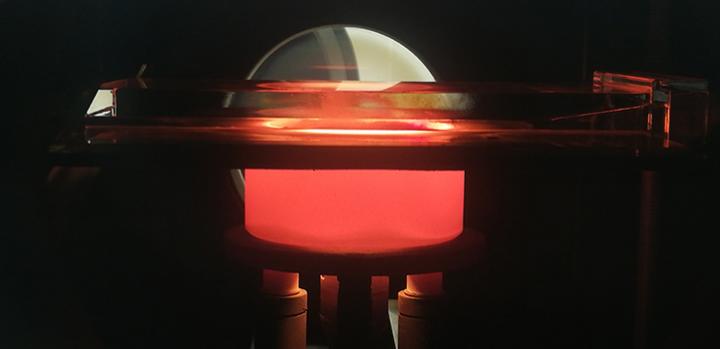
Credit: © 2020 KAUST
Making pure red LEDs from nitride crystals is a goal that has so far frustrated engineers. However, these LEDs are vital for building the next generation of energy-efficient micro-LED displays to follow OLED displays and for creating lighting with color tuning. Now, for the first time, a team of electrical engineers at KAUST has succeeded in making these LEDs.
“Electrical engineers can already make bright LEDs using varying materials to produce different colors. But to improve display technologies, engineers must integrate the three primary color LEDs, red, green and blue, onto one chip,” explains Daisuke Iida, an electrical engineer at KAUST. This means they need to find one material that is suitable for manufacturing all three colors. The material should be able to produce each color with high intensity, and ideally, it should have a high-power output, but use relatively little battery voltage.
The best candidates for generating all three colors are a family of compounds called nitride semiconductors. These are crystals containing nitrogen that in theory can be used to create LEDs that produce light with wavelengths between ultraviolet and infrared, which includes the entire visible spectrum. Engineers usually use gallium nitride to make blue and green LEDs, but they have struggled to make bright red LEDs with this crystal. “Red vision has been almost impossible–other groups have only really succeeded in making orange, not apple red,” says group leader, Kazuhiro Ohkawa. “Now, we have developed a crystal growth system to realize pure red LEDs.”
Replacing a large portion of the gallium with the element indium gives the desired red, but it is hard to do because indium easily evaporates from the crystal. So Iida, Ohkawa and colleagues created a reactor with extra indium vapor above the crystal’s surface, a process known as metalorganic vapor-phase deposition. This added pressure prevents the indium in the crystal from escaping. “This gives us a higher indium concentration at the surface,” says Ohkawa. “That’s our secret!”
But there was another hurdle to overcome. Indium is made of larger atoms than gallium, so when it is introduced, it creates defects in the crystal, degrading the quality of output light. The team’s trick was to also add aluminum, which has small atoms. “The introduction of the small atoms reduces the strain on the crystal, resulting in fewer crystal defects,” says Iida.
“Another advantage is that the LEDs operate at about half the voltage of its competitors,” says Ohkawa. “This will give you a longer lifetime for batteries.”
###
Media Contact
Carolyn Unck
[email protected]
Original Source
https:/
Related Journal Article
http://dx.




